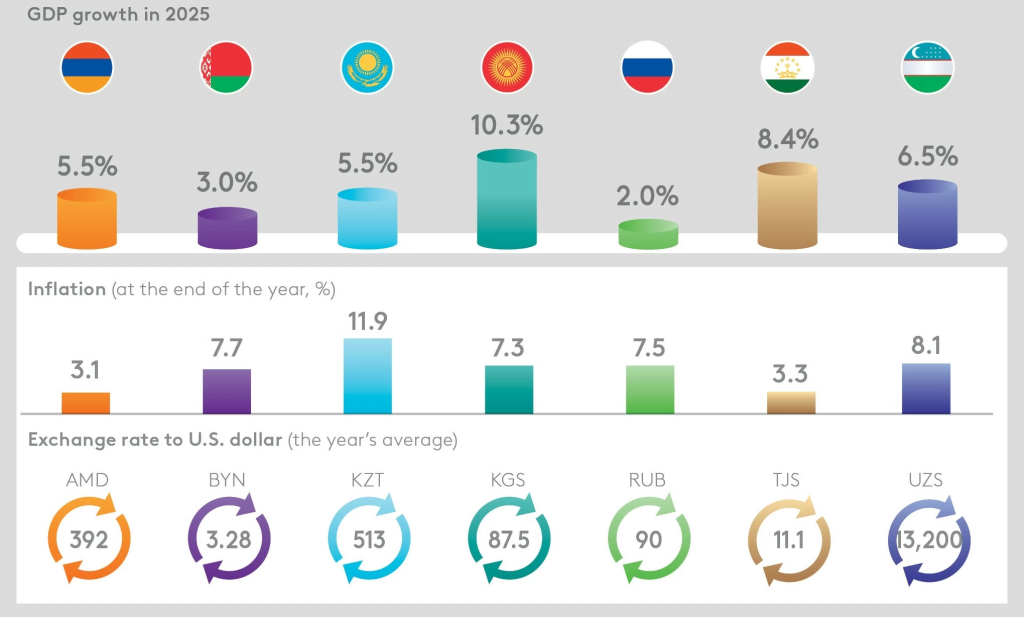The analysis examines economic developments in early 2025 and outlines key macroeconomic projections for late 2025, as well as forecasts for 2026 and 2027.
This marks the first presentation of macroeconomic projections for Uzbekistan. By the time Uzbekistan joined the EDB member countries, the Bank had developed and implemented a modelling toolkit enabling comprehensive analysis of macroeconomic trends and medium-term forecasting for its newest member.
EDB analysts outline major global economic trends and their implications for Eurasia. Global growth is expected to slow to 3% in 2025, down from 3.3% in 2023–2024. Heightened uncertainty stemming from US tariff policy and structural challenges will restrain global economic activity. In the US, declining consumer confidence and weak business sentiment are anticipated to slow GDP growth to 1.4 % in 2025, compared to 2.8 % in 2024. Growth in the euro area is expected to remain subdued at around 0.6 %, following 0.9 % the previous year. Reduced external demand amid trade tensions will constrain growth potential. Meanwhile, China’s economy is projected to sustain growth near 5% in 2025, supported by government measures to stimulate domestic demand.
Inflation in developed economies is forecast to accelerate further in 2025 due to higher costs from tariff increases. However, with weaker economic dynamics, the Federal Reserve rate is expected to decline from 4.25–4.50% in June to around 4% by year-end, while the ECB rate is projected to hold steady at 2% through the end of 2025.
Despite a challenging external environment, economic activity in EDB member countries is forecast to remain strong in 2025. Growth will continue to be powered by domestic sources, primarily investment in infrastructure and industry, alongside robust consumer demand driven by rising household incomes. EDB analysts estimate regional GDP growth of 2.7% in 2025, with inflation easing to 7.7%, down from 8.8% in 2024.
Key macroeconomic projections for EDB member states in 2025

Russia’s economy is forecast to slow gradually to 2.0% in 2025 following a period of strong growth, as domestic demand begins to cool. A prolonged spell of high interest rates and rouble appreciation in the first half of the year is expected to bring inflation down to 7.5% by year-end, compared with 9.5% in 2024. EDB analysts anticipate that the Russian rouble will weaken in the second half of the year, reaching RUB 95 per US dollar by the end of 2025. Although high interest rates will continue to support the national currency, declining oil prices and reduced export volumes will limit the supply of foreign exchange in the market.


